TDK's Future StrategyAssessment by the Chairman
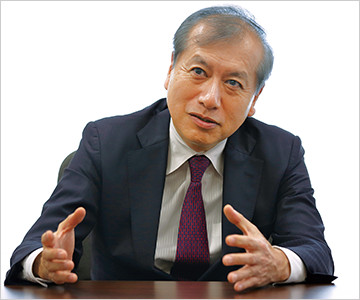
Makoto Sumita
Outside Director
Chairman of the Board of Directors
Chairman of the Nomination
Advisory Committee
Chairman & CEO of INNOTECH CORPORATION
About three years ago, it became clear that under the status quo, profit growth would slow not only in HDD magnetic heads, which had led TDK's growth, but also in the core electronic components business. That was when TDK began discussions around what its future strengths would be and the direction the Company should take going forward.
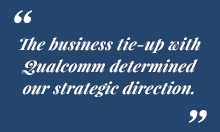
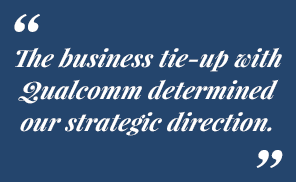 As discussions progressed regarding which technologies should be nurtured internally and which should be acquired by borrowing outside capabilities, the conclusion was reached that a partnership between Qualcomm, which has software and algorithm technology, and TDK, which is capable of embodying those technologies in its own products, would be ideal. The business tie-up with Qualcomm that emerged from those discussions eventually determined the direction of a major strategy that included expansion of TDK's sensor business. Once that larger direction was decided, it was not long before companies such as Micronas and InvenSense came to the fore as potential acquisitions. In selecting those deals, we analyzed demand trends in the sensor market and the status of competitors from a variety of angles, looking for the companies that would best fit with TDK's growth strategy.
As discussions progressed regarding which technologies should be nurtured internally and which should be acquired by borrowing outside capabilities, the conclusion was reached that a partnership between Qualcomm, which has software and algorithm technology, and TDK, which is capable of embodying those technologies in its own products, would be ideal. The business tie-up with Qualcomm that emerged from those discussions eventually determined the direction of a major strategy that included expansion of TDK's sensor business. Once that larger direction was decided, it was not long before companies such as Micronas and InvenSense came to the fore as potential acquisitions. In selecting those deals, we analyzed demand trends in the sensor market and the status of competitors from a variety of angles, looking for the companies that would best fit with TDK's growth strategy.
The cycle of technological change in the high tech sector has sped up and the cost of corporate acquisitions has risen; the risks involved have grown compared with five years ago. At the same time, it is impossible to predict whether those acquisition costs will drop going forward. To ensure that the execution side could take risks within an appropriate range when carrying out this series of acquisitions, we continued to review the suitability and growth potential of businesses brought before the Board by the management meeting, while the Board conducted a multifaceted review of the investment effects and risks and continued to provide feedback. With regards to InvenSense, a fabless firm, I give high marks to the execution side for their speedy response to employee and customer retention risks.
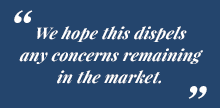
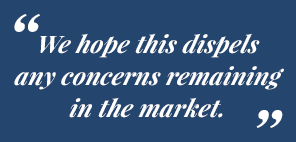 Because TDK is pursuing an offensive investment strategy, we try, to some extent, to keep positive scenarios in mind as we conduct feasibility studies. In the case of InvenSense, for example, while the deal presented significant potential for synergies in terms of software and algorithms, my assessment of areas that are not making much of a contribution to profit is quite conservative. I also believe that TDK's true capabilities will be tested as it attempts to enhance corporate value for both parties to these acquisitions, extracting value from technologies dependent on individuals that may not even appear as intangible fixed assets on the balance sheet, or value of which the acquired party may not even be aware.
Because TDK is pursuing an offensive investment strategy, we try, to some extent, to keep positive scenarios in mind as we conduct feasibility studies. In the case of InvenSense, for example, while the deal presented significant potential for synergies in terms of software and algorithms, my assessment of areas that are not making much of a contribution to profit is quite conservative. I also believe that TDK's true capabilities will be tested as it attempts to enhance corporate value for both parties to these acquisitions, extracting value from technologies dependent on individuals that may not even appear as intangible fixed assets on the balance sheet, or value of which the acquired party may not even be aware.
In terms of corporate governance, I think TDK has made progress in splitting the business execution function from the supervisory function. On the Board of Directors, of which I am chairman, the three outside directors share an understanding of the importance of balancing accelerated decision-making with the need for vigorous discussion as part of fulfilling our obligation to be accountable to the Company's shareholders and investors. Based on his past experience, Mr. Yoshida is well acquainted with the investment risks associated with venture companies, and Mr. Ishimura has extensive experience in corporate acquisitions overseas. I think that kind of background has proven useful in discussions about the assessment of M&A deals and management of post-acquisition risks.
To encourage deeper discussions by the Board of Directors, about three years ago we instructed the management meeting to present the Board only with the most important agenda items, and only after they had been discussed thoroughly at the management meeting level. Beginning in 2017, we narrowed down the number of members participating in the management meeting, which has led to progress on this issue.
With the “shape” of the business in place, now comes the time to deliver results. I plan to keep a close eye on whether plans are being executed with a sense of speed, and whether strategies and investment targets are undergoing proper review. As one of TDK's outside directors, I look forward to seeing the Company quickly integrate its acquisitions, dispel any concerns in the market, and demonstrate growth that exceeds investor forecasts.
View the full text of “TDK's Future Strategy” on the PDF version.
TDK’s Future Strategy